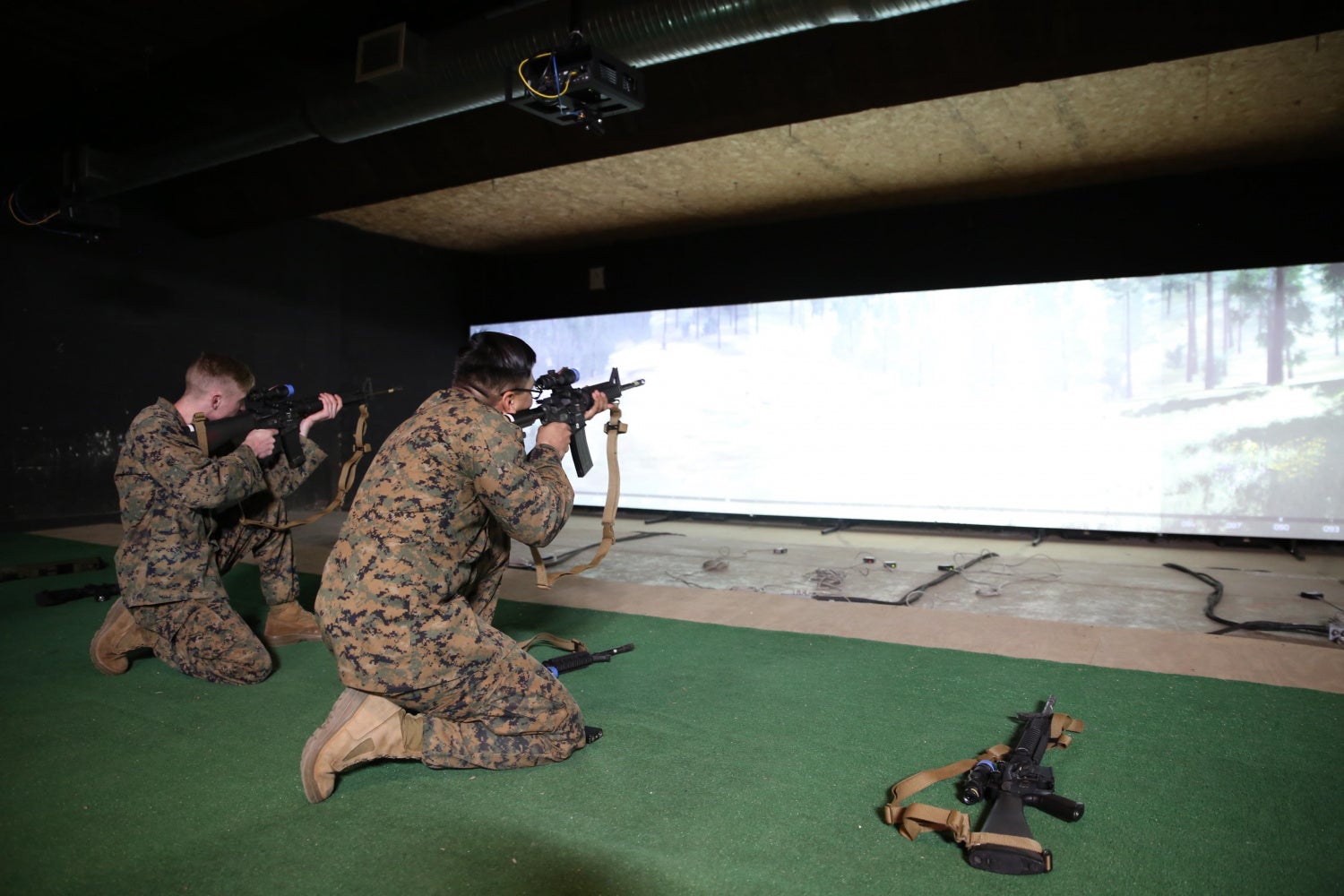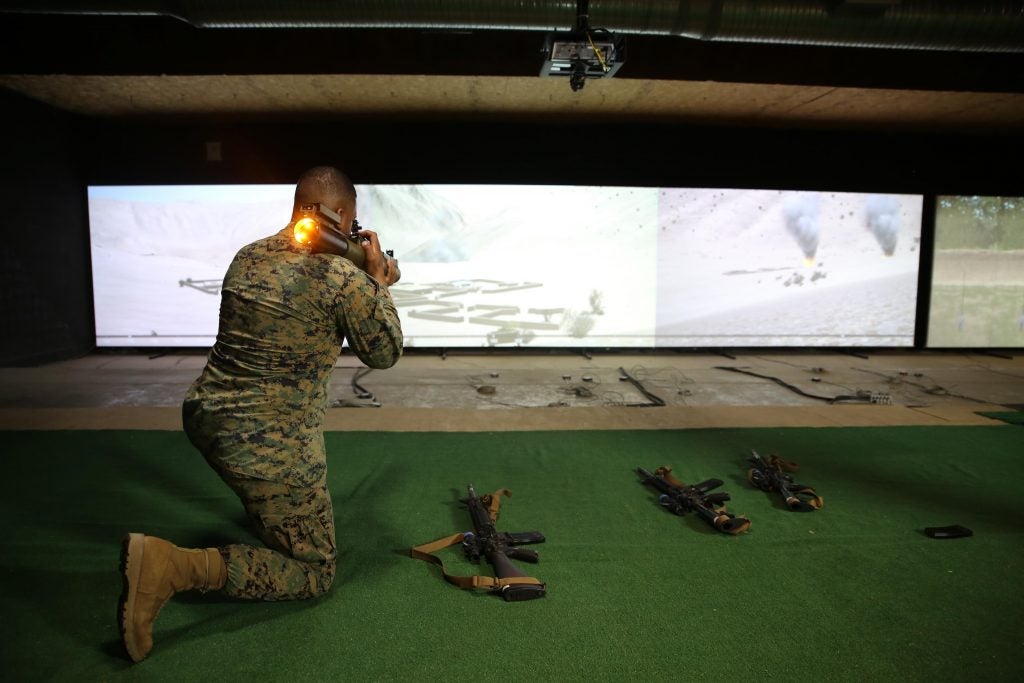More Synthetic Training On the Horizon for Marine Corps
The Marine Corps will be making a strong move towards synthetic training systems like the Indoor Simulated Marksmanship Trainer III. The training system supposedly improves live-fire performance and combat readiness. Although these systems have been employed as early as 2017, the Marine Corps is now planning on awarding a contract by March of 2021.
The synthetic training system allows The Marine Corps Systems Command office to train Marines to an ever-evolving standard when it comes to battlefield tactics and various enemy forces.
During the recent Virtual Interservice/Industry Training, Simulation and Education Conference, which was hosted by the National Training and Simulation Association, Col. Luis Lara said “It will significantly expand our ability to train to standard against continuously evolving enemy threat capabilities.”

Now the Marine Corps is taking on a focus of trying to acquire a standardized system from one manufacturer. A request for proposals was released last June and the Marine Corps plans on awarding a contract by March of 2021. The solicitation stated that the aim of the system is to “better prepare the Marine to be prepared to survive and be less vulnerable during first contact with enemy forces.” The Corps aims to be able to measure Marine’s abilities in the areas of target acquisition, marksmanship, and shoot/no-shoot decision making.

The Synthetic Training office will also be upgrading its current indoor marksmanship trainer – The ISMT III. This system is a 5 lane 3D simulation system used for remedial, virtual, instruction in basic and advanced marksmanship, shoot/no-shoot judgment, combat marksmanship, and weapons employment tactics. The ISMT III can be used to simulate a variety of small arms and light weapons ranging from the M4 carbine up to the M72 LAW rocket launcher. This program is required to continue to allow simulated training in a myriad of scenarios both at the home station, during pre-deployment training and while on deployment.
With today’s advances in technology, I think we will be seeing a bigger shift from live-fire exercises over to virtual and synthetic training systems which can be less expensive and provide a significant improvement in training safety.

